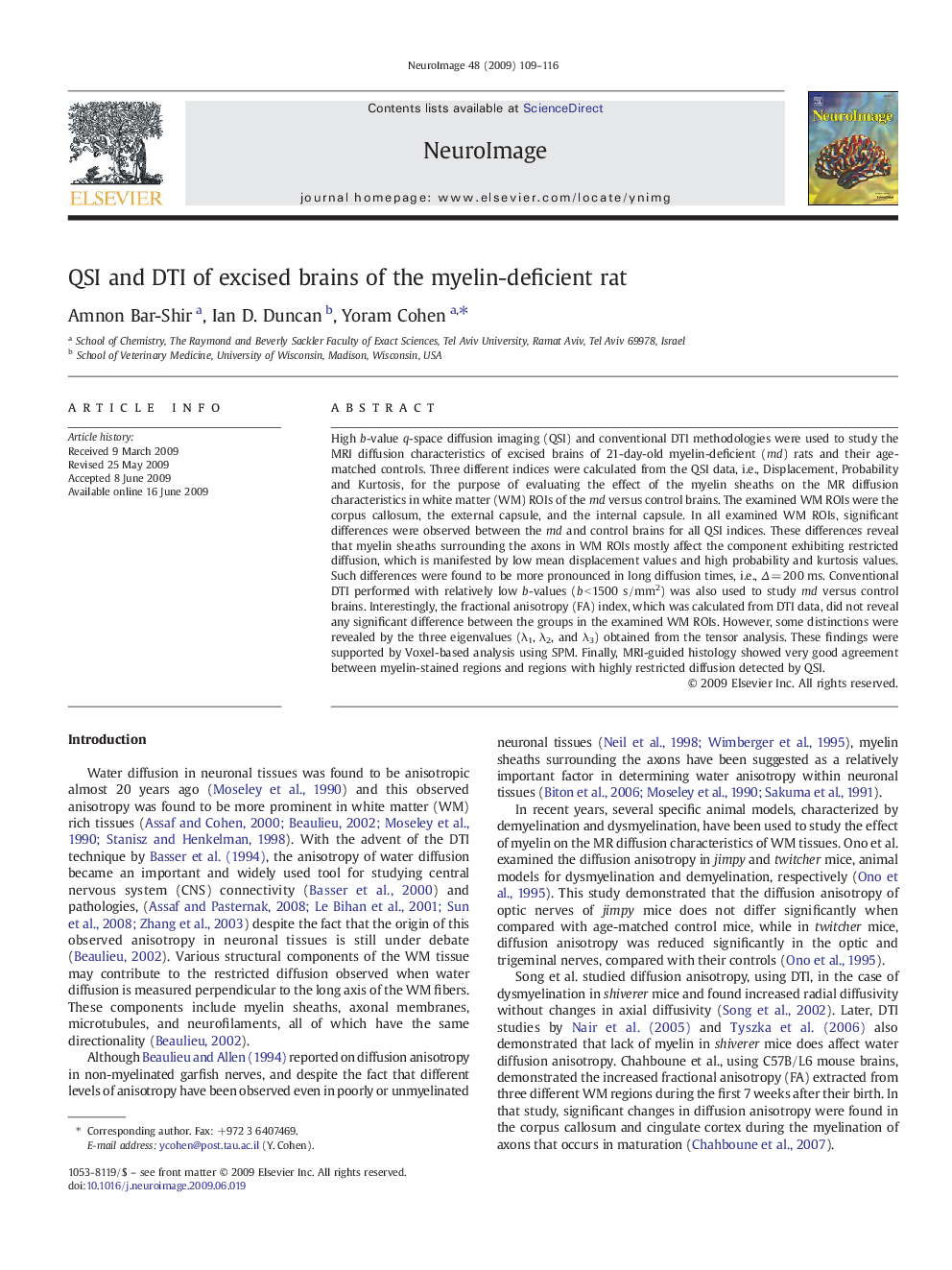| Article ID | Journal | Published Year | Pages | File Type |
|---|---|---|---|---|
| 3072662 | NeuroImage | 2009 | 8 Pages |
High b-value q-space diffusion imaging (QSI) and conventional DTI methodologies were used to study the MRI diffusion characteristics of excised brains of 21-day-old myelin-deficient (md) rats and their age-matched controls. Three different indices were calculated from the QSI data, i.e., Displacement, Probability and Kurtosis, for the purpose of evaluating the effect of the myelin sheaths on the MR diffusion characteristics in white matter (WM) ROIs of the md versus control brains. The examined WM ROIs were the corpus callosum, the external capsule, and the internal capsule. In all examined WM ROIs, significant differences were observed between the md and control brains for all QSI indices. These differences reveal that myelin sheaths surrounding the axons in WM ROIs mostly affect the component exhibiting restricted diffusion, which is manifested by low mean displacement values and high probability and kurtosis values. Such differences were found to be more pronounced in long diffusion times, i.e., Δ = 200 ms. Conventional DTI performed with relatively low b-values (b < 1500 s/mm2) was also used to study md versus control brains. Interestingly, the fractional anisotropy (FA) index, which was calculated from DTI data, did not reveal any significant difference between the groups in the examined WM ROIs. However, some distinctions were revealed by the three eigenvalues (λ1, λ2, and λ3) obtained from the tensor analysis. These findings were supported by Voxel-based analysis using SPM. Finally, MRI-guided histology showed very good agreement between myelin-stained regions and regions with highly restricted diffusion detected by QSI.
